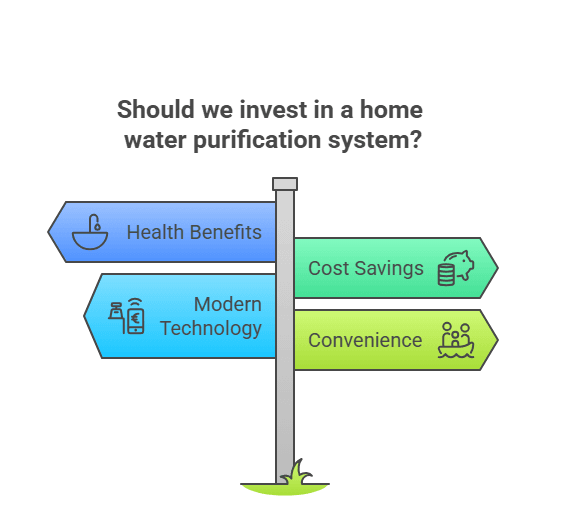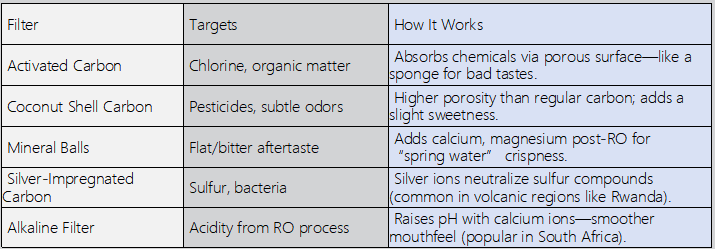Discover how One Stop Solutions tackles Africa’s water quality crisis with Flowmaji RO systems removing fluoride, arsenic & pathogens. Local Adaptable, Customizable filters. Cleand and Safe water for families.
Pan-Africa faces multifaceted water quality challenges, necessitating context-specific solutions. Reliable data and collaboration with local stakeholders are critical for effective interventions.
Microbiologically contaminated drinking water can transmit diseases such as diarrhoea, cholera, dysentery, typhoid and polio and is estimated to cause approximately 505 000 diarrhoeal deaths each year.

- Is tap water safe to drink in Africa?
In *many* African regions, no!due to inconsistent infrastructure and contamination.
Not all African water sources are identical. Contamination varies by region (e.g., cholera in flood-prone areas, fluoride in Ethiopia’ s Rift Valley, heavy metals near mines).
- Why not use cheaper methods like boiling or ceramic filters?
Simpler methods fail against *chemical* contaminants.
In Ghana, mining runoff leaves arsenic in water. Boiling won‘t remove it.
- Can’t we just add chlorine tablets to kill germs?
Chlorine tackles bacteria, not toxins.
**Success Story:** Chlorine reduced cholera in Malawi by 90%.
**Limitations:**
– No effect on *fluoride* (a crippling issue in Ethiopia’s bone-crippling “fluorosis belt”).
– Can react with organic matter to form carcinogenic byproducts.
- Why not use distillation? It’s pure H₂O!?
Energy-intensive and impractical for most households.
Distillation requires fuel or electricity (scarce in rural DRC or South Sudan).
- Are natural filters like Moringa seeds effective?
A partial fix with cultural roots.
**Traditional Wisdom:** Crushed Moringa seeds clump sediments and kill some bacteria. **Gaps:**
– Doesn’t address arsenic, lead, or fluoride.
– Inconsistent dosing risks incomplete purification.
**Hybrid Approach:** NGOs in Senegal pair Moringa pre-treatment with RO for hard-to-reach villages.
- What about activated alumina filters for fluoride?
Specialized but single-issue.
**Fluorosis Crisis:** In Ethiopia’s Rift Valley, 41% of water sources exceed WHO fluoride limits.
**Limitations:**
– Doesn’t remove pathogens or nitrates (common in farming regions).
– Requires frequent replacement.
- Why are RO systems necessary in Africa?
Many African water sources face overlapping threats:
pathogens, chemicals (e.g., arsenic, fluoride), and heavy metals (e.g., lead from mining). RO tackles *all* at once.
**Multi-Contaminant Crisis:**
– Ethiopia: 14 million risk fluorosis from fluoride in groundwater.
– Niger Delta: Oil pollution mixes with bacteria in drinking water.
**RO’s Edge:** Unlike boiling or chlorine, RO removes *both* microbes and toxins.
- Can RO systems adapt to different contaminants??
Yes! Modern RO systems are modular which you can “mix and match” filters for specific threats.

- Does RO waste water in drought-prone regions?
Older systems did, but new innovations recycle up to 75% of wastewater.
**Innovations:**
-Solar-Powered RO: Uses renewable energy to cut waste (e.g., SOURCE Hydropanels in Namibia).
-Wastewater Reuse: Redirect rejected water to house cleaning usages.
**Trade-Off:** Losing 1 liter of water to RO beats losing a child to cholera.
- Can rural families maintain complex RO systems?
Yes! With innovating design and DIY training.
**Success Stories:**
– Kenya: Women-led cooperatives service RO units in 100+ villages.
– Ghana: Bamboo-housed RO systems simplify repairs with local materials.
– NGO Role: Groups like Charity: Water train “Water Champions” in each community.
- Are RO systems too expensive for African households?
Upfront costs are high, but long-term savings outweigh them.
**Math Behind It:**
– Cost: $200–$500 for a household system (lasts 5–10 years).
– Savings: A family in Zambia spends $30/month on diarrhea treatments; RO eliminates 80% of cases.
- Can RO systems improve water taste?
Absolutely! RO removes contaminants that cause bad tastes *and* lets you add filters for crisp, natural flavor.
**Bad tastes in water often come from:
– Chlorine (common in city-treated water).
– Sulfur (rotten egg smell in groundwater).
– Metallic ions (iron, zinc from pipes or mining).
– Organic matter (earthy/musty flavors in rivers).
|**RO System’s Secret Weapon:** It strips out these culprits, then lets you *customize* taste with add-ons.

- How do I know which filters my community needs?
Test first, then build. Water Quality is an art of Science.
**Steps:**
1. **Free Test Kits:** NGOs like *Water.org* provide strip tests for pH, fluoride, bacteria.
2. **Lab Partnerships:** Send samples to universities (e.g., University of Nairobi’s water lab).
- How to install Flowmaji RO System?
